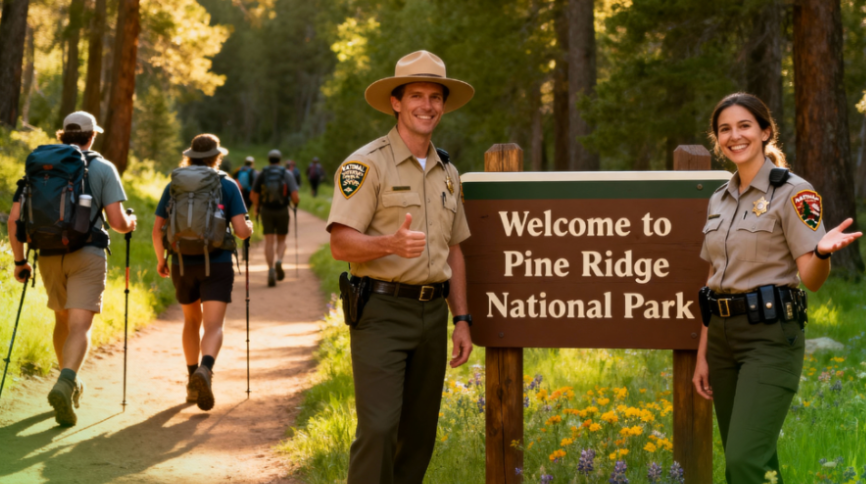Public parks are cherished community assets: places to reconnect with nature, exercise, socialize, rest, and play. But with growing visitor numbers, tighter municipal budgets, and rising expectations, park agencies often struggle to stay ahead of maintenance, safety, and user satisfaction issues.
Real-time feedback—enabled by a system like FeedbackNow—can be a powerful tool for keeping parks responsive, well-maintained, and beloved by their communities.
The Opportunity & the Challenge
National and regional parks are seeing surging visitation: for example, the U.S. National Park Service recorded 331.9 million recreation visits in 2024, a new high. Meanwhile, in regional parks systems, satisfaction is high—but slipping: in a recent study, 88 % of visitors rated facilities “excellent” or “very good,” down from 95 % some years earlier. Metropolitan Council
These trends underscore two key challenges for park administrators:
- Scale & maintenance pressures: More visitors means more wear-and-tear, increased trash, infrastructure strain, and more rapid degradation.
- Delayed insight: Conventional surveys or periodic inspections often lag behind real problems. By the time an issue surfaces, visitors may already be dissatisfied—and may share complaints publicly on social media or review platforms.
Parks already try using feedback surveys: the National Recreation and Park Association encourages feedback as a way to align programming with local needs, improve satisfaction, and engage staff in service excellence. NRPA But these surveys are often infrequent or relied on digital outreach alone, missing the immediacy of in-park experience.
What FeedbackNow Brings to the Park
FeedbackNow is a platform that turns passive users into engaged respondents, enabling immediate, actionable insight at the point of experience. Here’s how it fits into the public park setting:
1. On-site sentiment capture
- Place simple feedback kiosks (e.g. smile/neutral/frown buttons) or tablets at key park nodes—entrances, restrooms, picnic areas, trailheads, playgrounds.
- Use QR codes on signage or benches so visitors can give feedback via their phones.
Low effort makes it more likely people will respond when they feel strongly—whether positive or negative.
2. Alerts & fast response
- Configure threshold-based alerts: e.g. if several negative responses come from a restroom or picnic zone, facilities or maintenance staff are dispatched.
- This turns what might become a public review or social media complaint into a manageable issue addressed quickly.
3. Trend analysis & root cause detection
- Dashboard views can filter feedback by location, time of day, or week to surface repeating pain points (e.g. “trail muddy after rain,” “trash bins full midday,” “restroom odor midday”).
- Over time, administrators can spot patterns and prioritize capital or operational investments based on user signals.
4. Correlating with operational & sensor data
- Many parks now deploy sensors (for crowd counting, light, moisture, sound) or log maintenance incidents. Aligning those metrics with real-time sentiment helps validate what’s happening on the ground.
- For example, repeated negative feedback about crowded picnic areas after noon might correlate with visitor count data.
5. Encouraging positive engagement & storytelling
- Happy visitors can be nudged (via optional prompts) to share positive feedback—boosting the park’s online reputation through word-of-mouth, social media, or testimonials.
- Administrators can use anonymized feedback to highlight successes in newsletters or community reports.
6. Low friction deployment & privacy
- FeedbackNow’s devices can operate independently of park network infrastructure (helpful in remote or limited-IT settings).
- Because responses are anonymous (no PII required), visitors feel safe giving honest feedback.
Use Cases That Make a Difference
- Restroom & hygiene issues: Install feedback kiosks just outside restrooms; quickly detect when a restroom is dirty or out of supplies.
- Trail & path maintenance: Trailheads or junctions can host feedback points to flag issues like erosion, signage problems, or flooding.
- Shade, benches & comfort infrastructure: In open lawns or picnic zones, allow visitors to flag missing seating, shade gaps, or trash overflow.
- Safety & lighting: Near pathways or parking lots, visitors can indicate if lighting is insufficient, or if they feel uncomfortable in certain zones.
- Events & programming feedback: During concerts, festivals, or guided tours, provide quick post-event feedback kiosks to evaluate satisfaction, crowding, or logistics.
Benefits & Return on Investment
By embedding continuous feedback into the park experience, administrators can expect:
- Faster issue resolution, preventing small problems from escalating
- Improved visitor satisfaction, which helps build loyalty and positive word-of-mouth
- More efficient resource allocation, since maintenance efforts are prioritized based on actual user sentiment
- Data-driven planning, letting capital investments flow where users consistently complain
- Stronger community trust, as visitors see real, visible responsiveness
- Better reputation & reduced negative online reviews, since issues are caught and resolved before complaining publicly
If parks can’t keep pace, dissatisfaction spreads fast through review sites or social media—especially given how often people post about park experiences. FeedbackNow helps intercept negative sentiment before it goes public.
In Closing
Public parks are living, dynamic spaces—full of promise, but also vulnerable to neglect or reactive maintenance. With FeedbackNow, park agencies can stay attuned to the voices of visitors in real time, respond rapidly, and build a proactive culture of continuous improvement. The result? Healthier parks, happier communities, and a user experience that matches the care and vision behind these public spaces.
Contact us to learn more about how FeedbackNow can help improve your customer experience and operations!





